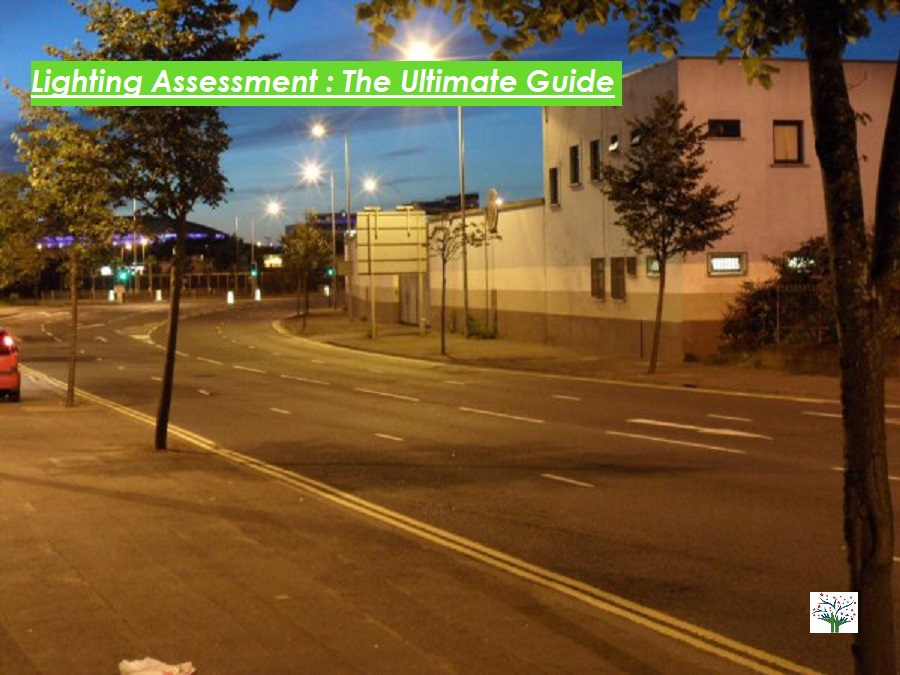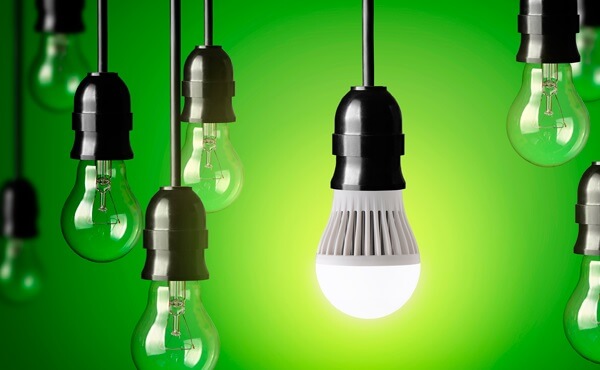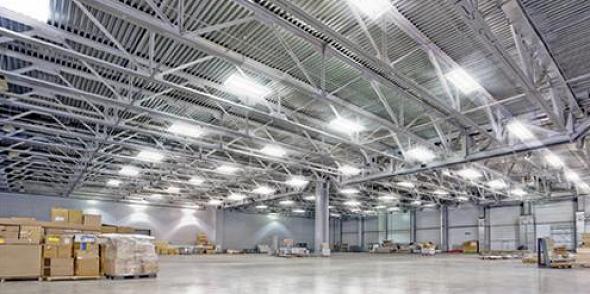Lighting Assessment: The Ultimate Guide
Lighting assessment or illumination survey simply means examination of the lighting conditions in the work environment.
Doesn’t working in very low light or too bright light always discomfort our precious eyes?
So, what should be done to have optimum level of lighting, which suits your type of workplace?
One thing which we can do is carry out light assessment.
Don’t know what light assessment is?
No worries, as you are about to find out what light assessment is all about.
A light assessment helps us to identify potential hazards and provides correcting measures needed to protect the employees.

Importance of Proper Lighting in the Workplace
Proper lighting in the workplace is not just about visibility; it affects employee well-being, productivity, and overall safety. A well-lit environment ensures fewer workplace accidents, reduces strain on the eyes, and improves concentration. Studies have shown that good lighting can enhance mood and cognitive performance, making it a crucial factor in workplace design.
How efficient is your lighting setup? Calculate your ideal lux levels with our Lux & Illuminance Calculators and take your lighting design to the next level.
Types of Lighting Used in Workplaces
Different types of lighting serve different purposes in a workplace setting. Some of the common types include:
- Natural Light – Sunlight exposure improves well-being and reduces energy consumption.
- Ambient Lighting – General lighting that provides overall illumination in the workplace.
- Task Lighting – Focused lighting used for specific tasks, such as reading, writing, or assembling products.
- Accent Lighting – Decorative lighting used to highlight specific areas or objects.
- Emergency Lighting – Backup lighting that provides visibility during power failures.
Lighting Impact Assessment: Understanding the Broader Effects
A Lighting Impact Assessment evaluates how lighting conditions affect:
- Employee Productivity – Poor lighting reduces efficiency and focus.
- Health & Well-being – Eye strain, headaches, and fatigue are common issues.
- Energy Consumption – Inefficient lighting leads to excessive power usage.
- Safety & Compliance – Improper lighting can lead to accidents and regulatory violations.
By conducting a Lighting Impact Assessment, organizations can make data-driven decisions to improve both employee experience and energy efficiency.
Lighting Assessment: Potential Hazards of improper lighting
Below some are potential hazards of improper lighting placements:
- Insufficient illumination
- Too much of bright light
- Excessive contrast
- Glare
- Flicker and
- Blindspot
Working in an environment having these hazards will not only damage the eyes of the employees but will also result in reduced productivity.

Lighting Assessment: Effects on Health of Improper lighting
Some common effects of working for long period in environment having these hazards are;
- Reduced vision
- Eye strain
- Eye irritation
- Blurred vision
- Headache
- Migraine
- Poor concentration
So, how should we carry out light assessment?
For this we can either contact environmental consultants or conduct an illumination survey on our own.
There are basically two approaches to conducting a light assessment or illumination survey. These are;
- Lighting survey checklist
- Light (lux) measurement
Read more about LUX level standards in Industry
Lighting survey checklist
This approach helps provide information about the lighting conditions in the work environment and it doesn’t involve measurement of light (lux).
A good thing about this approach is you can prepare your own checklist according to your need or use checklists available.
A Lighting Survey Checklist ensures a structured approach when assessing workplace illumination. Below is an extended version of a basic checklist:
| Checklist Item | Yes/No | Remarks |
|---|---|---|
| Is there sufficient light for tasks? | ✅ / ❌ | |
| Are there any troublesome reflections? | ✅ / ❌ | |
| Is there glare along the normal line of sight? | ✅ / ❌ | |
| Are there bright, shiny objects causing distractions? | ✅ / ❌ | |
| Are there frequent transitions between extreme lighting conditions? | ✅ / ❌ | |
| Are light fixtures covered properly to diffuse light? | ✅ / ❌ | |
| Are lights placed correctly to avoid flickering or shadows? | ✅ / ❌ |
Using this checklist ensures a thorough evaluation of lighting conditions and helps in maintaining a safer work environment.
How can we prepare a lighting survey checklist?
For an easy preparation of survey checklist you can always make groups. These groups can be based upon the type of work or lighting requirements, etc.
Talking about the format you can keep it as a simple YES/NO format or keep a format based on remarks or both.
Coming to where our main focus should be is what all points to be included. In the survey checklist, there are certain basic points which should be included, but depending upon the aim of your survey checklist, feel free to add or modify points.
Following are some basic points which can be considered;
- Sufficient light for task
- Troublesome reflections
- Glare along or near normal line of sight
- Bright shiny objects out of view
- No frequent transitions between extremes of light and dark and near or far
- Light strobing due to wrong placement of light and fan
- Lamps covered to diffuse light evenly
- Shadows
- Flickering of light
- Visual strains or headaches
- Glare on computer monitors
- Well placed lighting
- Blinds or curtains on windows
- Matte finished furniture and equipments
- Machinery parts painted a colour which contrasts with background
- Adequate lighting in storage rooms, stairways, corridors
- Regular replacement of bulbs
- Regular cleaning of light fixtures
- Regular cleaning of upper walls, ceilings and task stations
Read more about Environmental health & safety officer’s role and responsibility
Lighting (lux) measurement approach:-
This approach allows you to conduct measurement of light with the aid of lux meter.
Read more about Effects of Poor Lighting at Workplace or Homes.
Lighting Assessment Report: How to Document Your Findings
Once you conduct a lighting assessment, it is essential to document the findings in a structured report. A Lighting Assessment Report typically includes:
- Introduction – Purpose of the assessment, location, and scope.
- Methodology – Checklist-based evaluation or lux meter measurements used.
- Observations – Lighting conditions in different areas, issues identified.
- Compliance Check – Comparison with workplace lighting standards.
- Recommendations – Steps to improve lighting and address hazards.
- Conclusion – Summary of findings and next steps.
A well-prepared lighting assessment report helps ensure compliance, improve work conditions, and maintain safety standards.
Lighting Assessment Report Template & Sample
If you need a structured format for conducting and documenting a lighting assessment, you can use a Lighting Assessment Report Template. Below is a sample format:
Lighting Assessment Report Format
| Section | Details |
|---|---|
| 1. Introduction | Purpose, assessment date, location |
| 2. Methodology | Checklist-based or lux measurement |
| 3. Observations | Lighting conditions in different areas |
| 4. Compliance Check | Comparison with standards |
| 5. Recommendations | Corrective actions needed |
| 6. Conclusion | Summary and next steps |
📥 Download a sample Lighting Assessment Report PDF here. (Add link if available)
Using this format, you can create a professional report to assess and improve workplace lighting conditions.
Regulations & Standards for Workplace Lighting
Workplace lighting is governed by various national and international standards. Some key regulations include:
- OSHA Lighting Standards (United States)
- Indian Lighting Standards for Workplace
- ISO 8995-1:2002 – Lighting of Workplaces (General Requirements)
- EN 12464-1 – European Workplace Lighting Standards
These standards define the minimum required lux levels for different work settings to ensure safety and efficiency.
Lighting Measurement Standards
When it comes to lux measurement you should have some standards to compare your lux recordings with. These standards are Workplace lighting measurement standards.
This provides information about the average illuminance required for different set of activities and work areas.
But, how are these standards set?
Workplace lighting is a tricky affair as it has to strike a balance between visual comfort and performance. It has to undergo careful considerations and detailed analysis and consider factors like natural light.

Natural light changes throughout the day and thus has to be included in calculations and design decisions.
To download Indian Lighting Standards for Workplace click here
Keeping the above in mind, the workplace lighting standards should be designed in such a way that it does not restrict the designer’s freedom for the use of innovative equipment and are set at levels which will provide healthier work environment.
Following are the average lighting requirements for different work environments and these standards are to be used for guidance purpose only.
- Corridors, circulation routes for movement of people, vehicles – 20 lux
- Rough work not requiring perception of detail at construction site – 50 lux
- Limited perception of detail in kitchen factories, potteries – 100 lux
- Moderate perception of detail at offices, sheet metal work – 200 lux
- Fine detail work at drawing offices, textile productions – 500 lux
Information obtained from a combination of lux measurement approach, lighting survey checklist approach and workplace lighting standards will help you achieve the optimum level of lighting for healthier and productive work environment.
Role of Smart Lighting and Automation in Modern Workplaces
With advancements in technology, smart lighting systems are now being used in workplaces to optimize illumination and energy efficiency. Some key innovations include:
- Motion-Sensing Lights – Turn on/off based on movement detection, reducing energy waste.
- Adjustable LED Lighting – Allows brightness and color temperature adjustments.
- Daylight Harvesting Systems – Automatically adjust artificial lighting based on the amount of natural light available.
- Integration with IoT & Smart Devices – Provides remote control and automation for lighting systems.
Implementing smart lighting solutions helps companies reduce energy consumption, enhance employee comfort, and improve productivity.
How to Improve Workplace Lighting Conditions?
Improving workplace lighting does not always require expensive upgrades. Some simple steps to enhance lighting conditions include:
- Maximizing Natural Light – Rearrange workspaces to take advantage of daylight.
- Using the Right Bulbs – Choose LED lights with suitable brightness and color temperature.
- Minimizing Glare and Shadows – Position lights strategically to avoid glare on screens and work surfaces.
- Regular Maintenance – Replace old bulbs, clean fixtures, and check for flickering issues.
- Providing Task Lighting – Use desk lamps and adjustable lighting for specific tasks.
By following these steps, businesses can create a well-lit and comfortable work environment for employees.
Lighting Assessment Services
Perfect Pollucon Services offers lighting assessment services for companies and homes. For more information you can get in touch with us by filling up contact us form.
A lighting assessment evaluates the quality, intensity, and placement of lighting in a workplace or environment to ensure safety, compliance, and efficiency.
A light assessment can be conducted using a lighting survey checklist or lux measurement to evaluate illumination levels and identify potential lighting hazards.
Adequate lighting is assessed by measuring lux levels with a lux meter and checking for glare, shadows, flickering, and uniform brightness using a structured checklist.
The 7 steps in the lighting design process are: 1) Identify needs, 2) Define lighting objectives, 3) Choose lighting types, 4) Determine placement, 5) Calculate lux levels, 6) Test and adjust, 7) Maintain lighting conditions.
A lighting test involves measuring brightness using a lux meter and assessing factors such as glare, contrast, and uniformity to ensure compliance with safety standards.
Lighting levels are measured in lux using a lux meter, which records the intensity of illumination in an area to determine whether it meets required standards.
A light impact assessment evaluates how lighting affects productivity, safety, energy consumption, and environmental factors, ensuring optimal workplace conditions.
Ceiling lights should be evenly spaced to prevent shadows, positioned to reduce glare, and selected based on room size and function to ensure balanced illumination.
